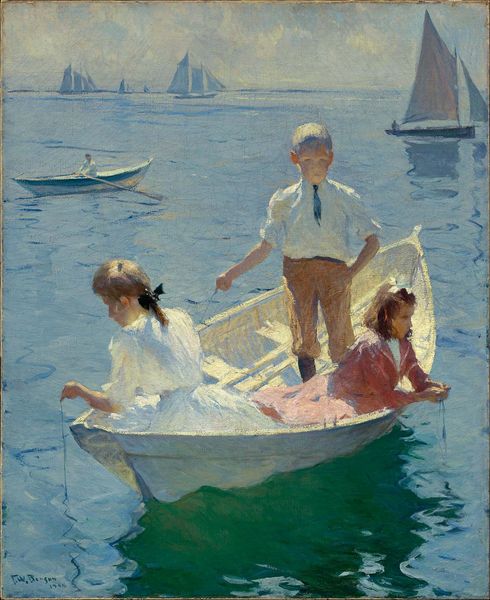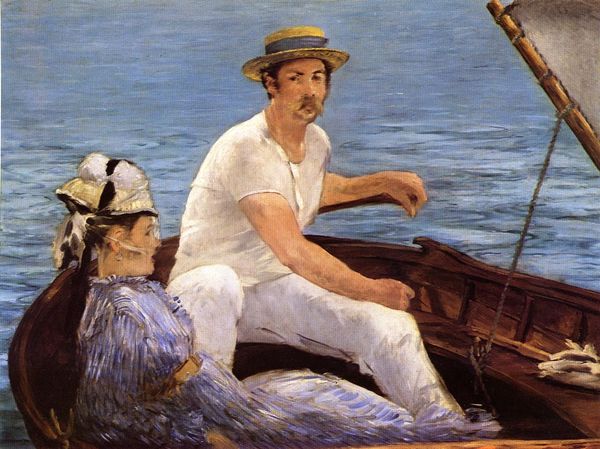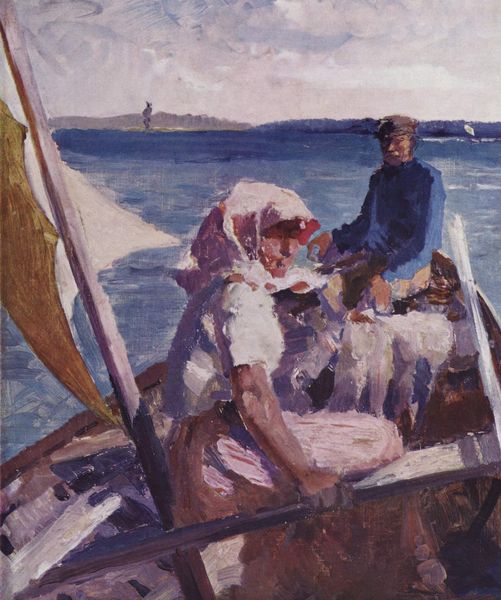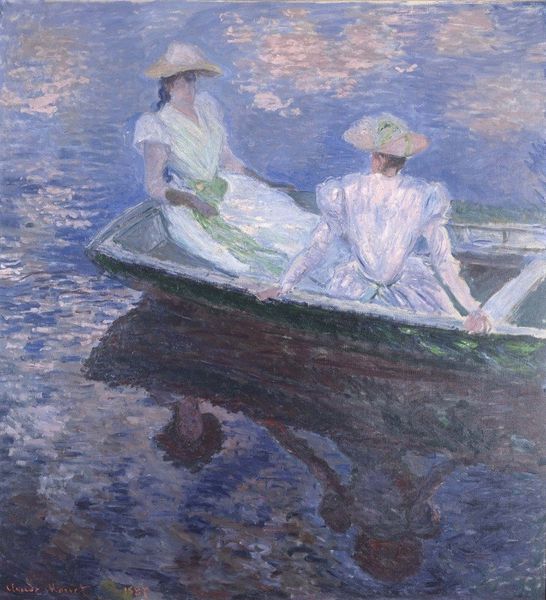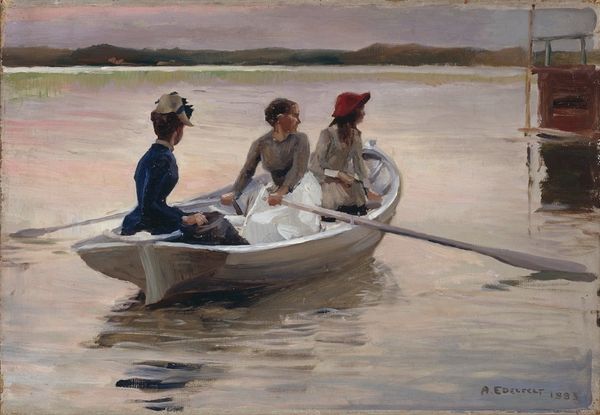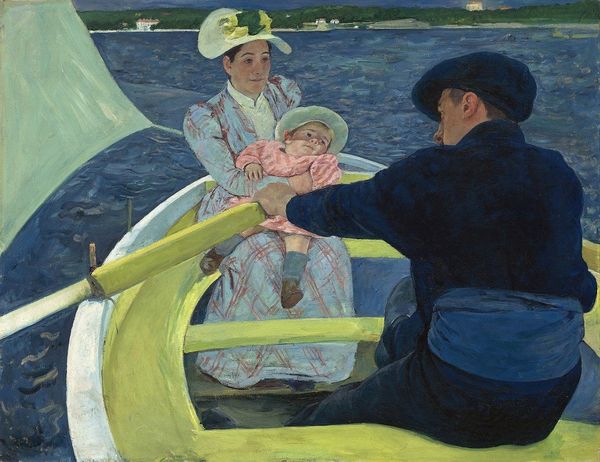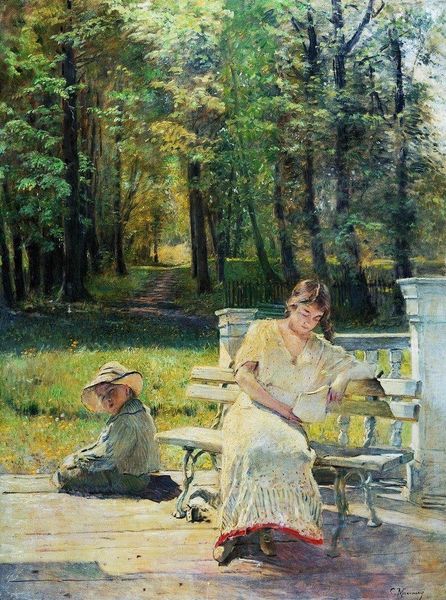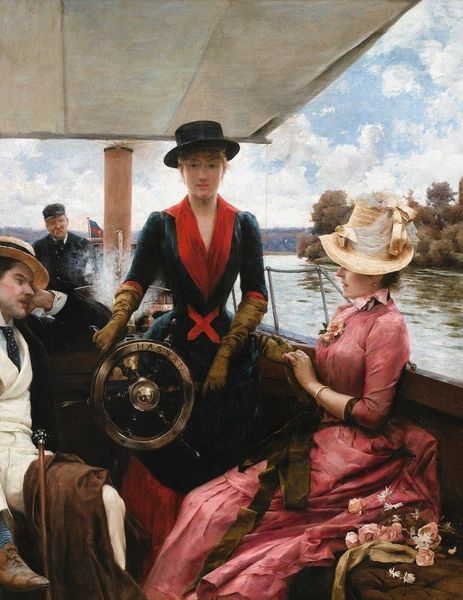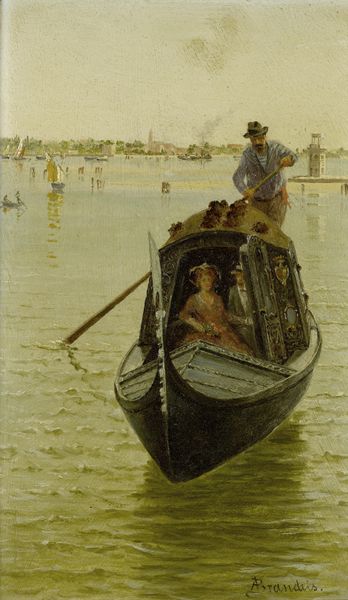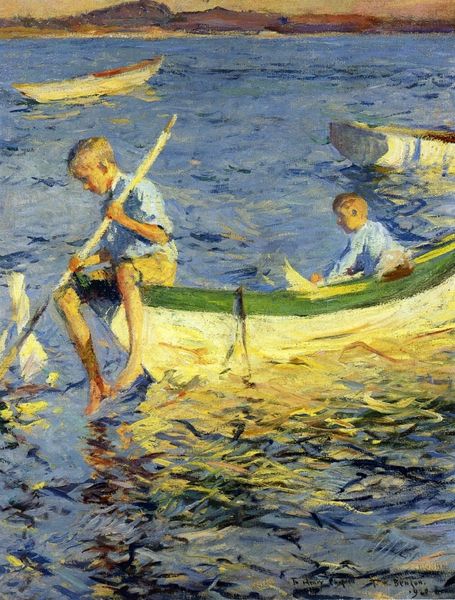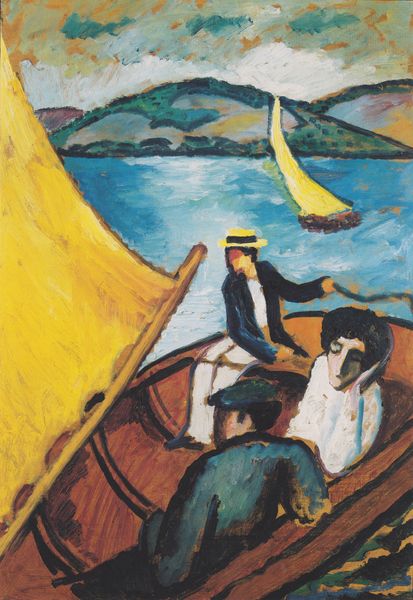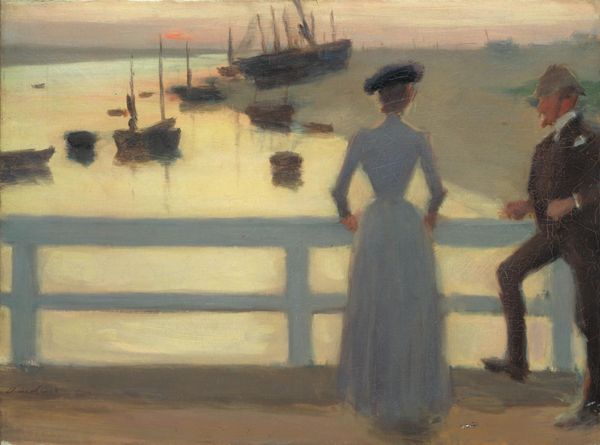
painting, plein-air, oil-paint
#
portrait
#
flâneur
#
painting
#
impressionism
#
plein-air
#
oil-paint
#
landscape
#
oil painting
#
portrait reference
#
cityscape
#
genre-painting
Dimensions: 149 x 115 cm
Copyright: Public domain
Editor: We’re looking at Édouard Manet's "Argenteuil," painted in 1874 with oils. I find the way he captured the light reflecting on the water really striking. How do you read the composition, its colours and shapes? Curator: Observe the composition first: it is divided roughly into thirds, the bottom focused on the figures, a middle third of water, and a hazy skyline. Notice how Manet’s brushstrokes vary: short, broken touches in the water create the effect you describe. But look at how the figures are treated with larger, bolder strokes. The stripes on the figures echo and reinforce the linear horizontality established by the waterline. Do you notice how that impacts the visual dynamism? Editor: Yes, I see it now! The textures contrast to create a dialogue between the figures and the background, and keep the eye moving. Why use those contrasts rather than creating visual harmony? Curator: The lack of strong blending heightens the sense of immediacy. It sacrifices detail for capturing fleeting light and sensation, a key tenet of Impressionism. Manet seems to challenge traditional notions of a 'finished' painting. We are prompted to actively participate in synthesizing what we see. Editor: So, he's prioritizing capturing a sensory experience over realistic representation through those bold techniques and contrasts in brushstrokes and textures. Curator: Precisely! His innovative brushwork, flattened perspective, and juxtaposition of textures create a new visual language, shifting focus to the act of painting itself. Editor: This formal analysis highlights Manet's ingenuity, challenging conventional art with innovative techniques! I’ll never see stripes the same way again.
Comments
No comments
Be the first to comment and join the conversation on the ultimate creative platform.
